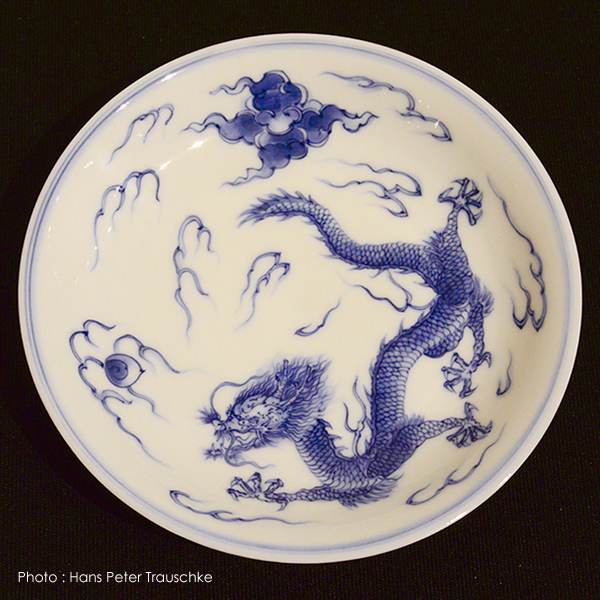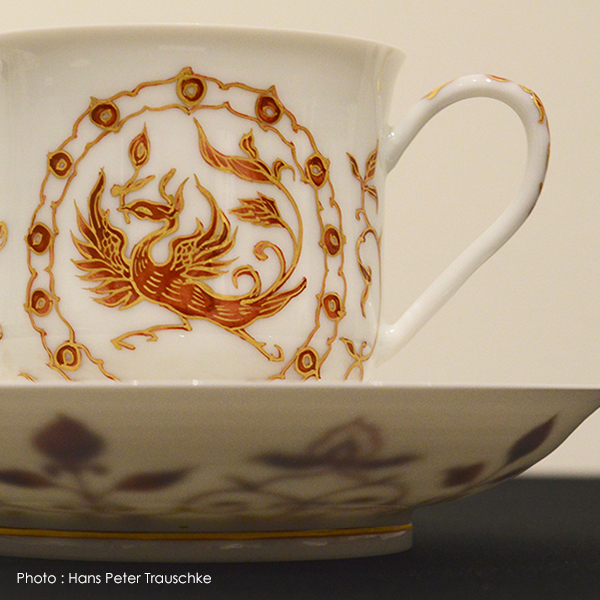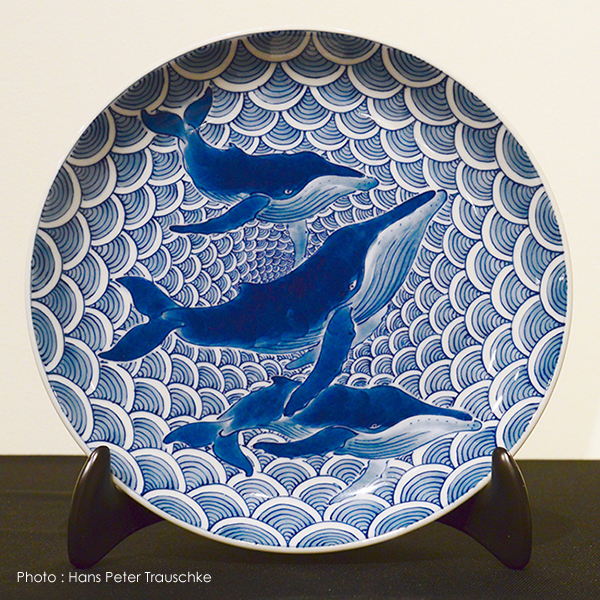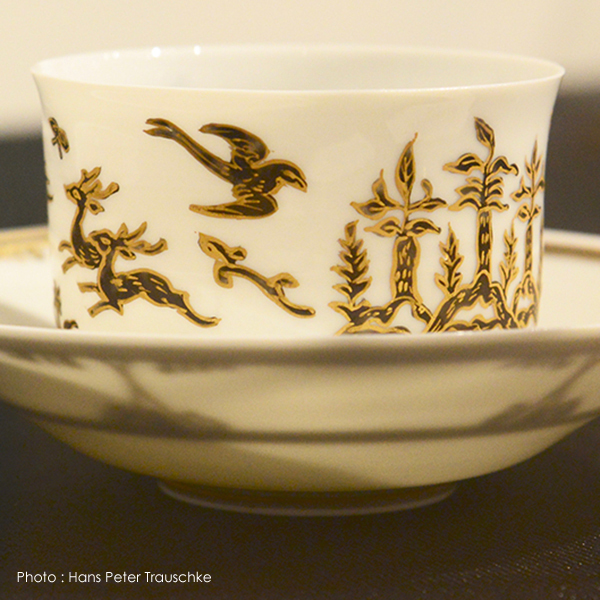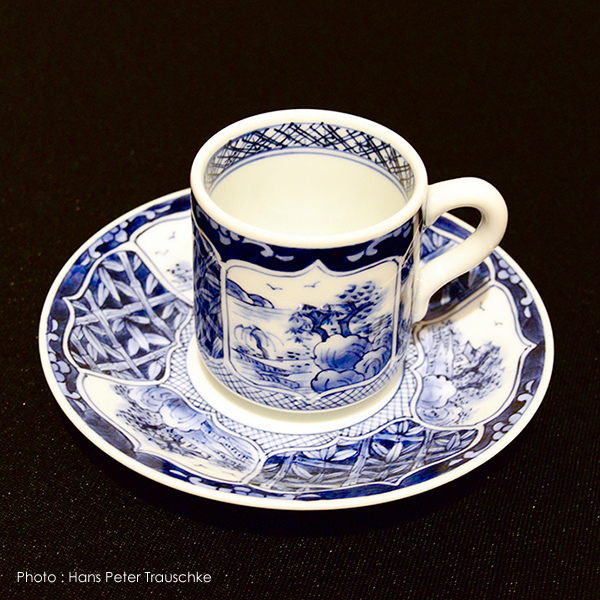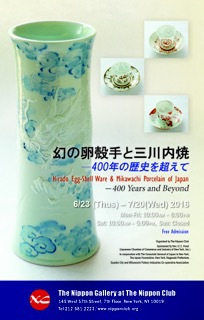
| タイトル | 幻の卵殻手と三川内焼 - 400 年の歴史を超えて - |
|---|---|
| 場所 | 日本クラブNY 145 W 57th St, New York, NY 10019 |
| 開催日時 | 2016年6月23日〜7月20日 |
江戸時代、現在の長崎県佐世保市に技術の粋を集めたやきものがありました。そこで焼かれたやきものは、藩の名称から「平戸焼」と呼ばれました。現在は「三川内焼」と呼ばれています。1637年、初代平戸藤祥は、御用窯創設者の一人として任命され、藩により手厚く保護がされ、作品は藩の献上品として使われました。製法も門外不出とされました。昭和になると皇室御用達になりました。高貴な人々に愛され、秘蔵されたがために庶民には手の届かない器だった時代がありました。
江戸時代後期から明治時代にかけて、平戸焼の輸出の主力商品となったのが「卵殻手(らんかくで)」と呼ばれる磁器です。卵の殻のように薄いことから欧米ではegg-shell chinaと呼ばれ、世界一薄い焼き物として高い評価を受けました。それらは今でも、欧米各地の美術館や博物館に収蔵され、海外でしばしば目にすることができます。しかし、時代の変化に伴い生産が減少し、やがて卵殻手の技法は誰にも受け継がれることがないまま100年程前に途絶えてしまいました。ところが、13代目にあたる平戸藤祥(藤本岳英)は卵殻手の技術的、美術的な質の高さに着目し、謎に包まれたその材料、成形の方法、焼成技術について長年の研究と試作を経て、2006年、卵殻手の復元に成功します。本展では、「卵殻手」の技法の謎を解いた13代目平戸藤祥の資料を初めて一般公開します。
また、古平戸の逸品と、平戸・三川内の窯元の窯元、五光窯、光雲窯、嘉泉窯から、400年の伝統を受け継ぐ現代三川内焼の秀作、合わせて66点を展示する予定です。さらには、メトロポリタン美術館やフィラデルフィア博物館等の海外博物館に所蔵される平戸焼の絵手本を含めた冊子を展示いたします。江戸時代、平戸藩の注文にあたって絵師が制作した絵手本は器の形と文様が墨と淡い色彩で描かれ、海を渡った平戸焼のロマンが溢れます。
是非、ご来場を賜り、独自の技法である「透かし彫り」、「置き上げ」、「染付」、「手捻り」など、作品に息づく陶工たちの想いを間近に感じながら、江戸時代の平戸焼から現代の三川内焼に至るまでの伝統の手技を今に受け継ぐ窯元たちの優れた作品をお楽しみ下さい。
| 主催 | 日本クラブ |
|---|---|
| 協賛 | JCC Fund (ニューヨーク日本商工会議所) |
| 後援 | 在ニューヨーク日本国総領事館、国際交流基金ニューヨーク日本文化センター、長崎県、佐世保市、三川内陶磁器工業協同組合 |
| 協力 | 五光窯、光雲窯、嘉泉窯、長崎歴史博物館主任学芸員松下久子、安弥多佳堂、和art Gallery、TV NCC長崎文化放送、NHK長崎放送局 |
| 監修 | 13代目平戸藤祥 |
| 企画・コーディネーター | 和art Gallery 林祥子 |

| Title | Hirado Egg-shell Ware & Mikawachi Porcelain of Japan - 400 Yeas and Beyond |
|---|---|
| Period | June 23 - July 20 |
| Location | NY NIPPON CLUB 145 W 57th St, New York, NY 10019 |
- Organized by The Nippon Club
- Sponsored by the J.C.C. Fund (the Japanese Chamber of Commerce and Industry of New York)
- With support from The Japan Foundation, New York, Nagasaki Prefecture, Sasebo City and Mikawachi Pottery Industries Co-operative Association
- In collaboration with Gokogama, Koungama, Kasengama, Nagasaki Museum of History and Culture Chief curator Hisako Matsushita, Ayatakado, WA art Gallery, TV (NCC, NHK)
- Supervisor: the 13th Hirado Tousyo
- Art Coordinator: Shoko Hayashi
Mikawachi was the capital of pottery as well as the fiefdom of Hirado domain. The wares produced in the Edo period (1603-1868) are called Hirado ware, while the wares produced after the Meiji period (1868-1912) are called Mikawachi ware today. The first Hirado Tousyo was appointed by the feudal lord of Hirado to establish the feudal kiln in 1637. Under the protection of the Hirado feudal administration, Hirado ware was significantly developed and prized as presentation wares for the shogun, the emperor and their families.
The sophisticated underglaze cobalt blue painted on the pure white porcelains, the openwork in wickerwork designs, the relief decorations called “Okiage”, and the thin-walled porcelains can be seen only in Mikawachi ware. Above all, extremely thin and lightweight porcelain wares called “eggshell wares” weighing only 30 grams amazed Europeans, and became widely popular as one of the thinnest wares in the world. Around 1900, however, the potters in Mikawachi were giving up making eggshell porcelain along with the change in demand, and eventually the production methods were lost.
About 100 years have passed since then, and the name “Hirado Tousyo” has been handed down for 13 generations since 1637 when the history of Mikawachi started as the official production site of Hirado ware. Gakuei Fujimoto, the thirteenth generation of Hirado Tousyo, focused on the high level of the lost production method of eggshell ware and its quality. He identified the materials, forming and firing techniques through countless tests and researches and, in 2006, he finally revived the eggshell porcelain.
In this exhibition, we would like to introduce the history of Mikawachi ware and the fascination of eggshell ware through the old resources and antique porcelains, and additionally the productions created by modern potters representing today’s Mikawachi. Especially the draft design of an antique porcelain (the actual porcelain of the draft design is currently preserved in The Metropolitan Art Museum), elaborate patterns painted on the eggshell wares in the 19th century, the vintage name board displayed during the export age, and the modern production methods of eggshell wares which are restored by Fujimoto, who walked around Hario island by himself to find out the materials, and also analyzed the ancient documents in several museums are absolutely well worth watching. Through the modern Mikawachi wares, which observe the long tradition but also develop a new individuality by researching the production method in East Asia, you will experience the polished skill and passion of modern potters of Mikawachi.


